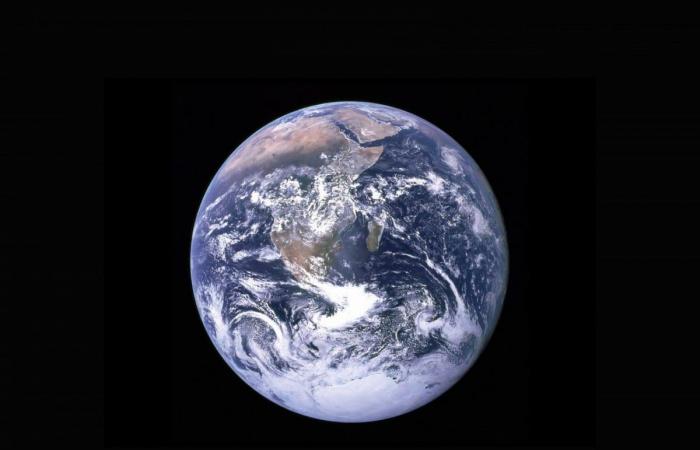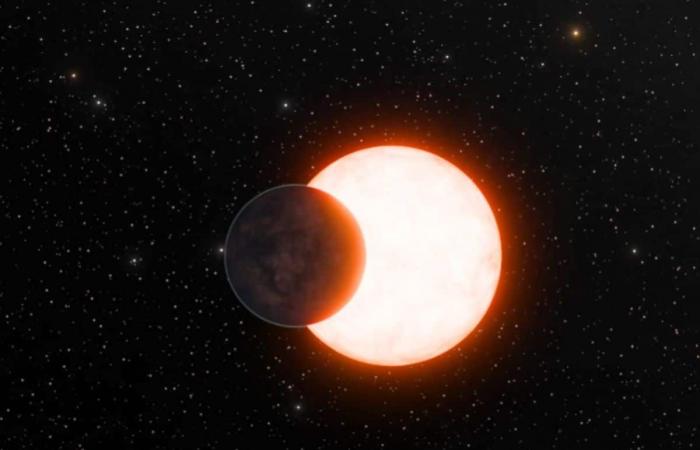The rest after this video
The heart of the Earth, this mysterious sphere of iron and nickel, slows down its rotation. A phenomenon that intrigues scientists and could have surprising repercussions. Find out what this means and why it arouses so much curiosity.
The rest after this ad
A stunning discovery for the Earth
Researchers have carefully analyzed seismic records from the last thirty years and made an unexpected discovery: the inner core has slowed down. This revelation comes from a recent study published in the journal Nature. John Vidale, professor of science at the University of Southern California, and Wei Wang of the Chinese Academy of Sciences, joined forces to track seismic tremors recorded between 1991 and 2023. With a particular focus on the activity of South Sandwich Islands, located in the South Atlantic.
The rest after this ad
By identifying 121 repeated earthquakes over this period. They observed a back-and-forth change in the inner core, a first in several decades. But why is it important? The rotation of the center of the planet influences the overall rotation. A slowdown in the inner core could lengthen the length of a day. Although this modification is of the order of a thousandth of a second, imperceptible to us.
Scientists used an ingenious method to reach this conclusion. By studying repetitive earthquakes, they observed patterns of organization. This delicate process, involving the analysis of similar seismograms produced by recurring tremors, makes it possible to reconstruct the interior movement. Using this technique, Vidale and Wang found that the inner core braked for the first time in several decades. This phenomenon could be due to complex gravitational and magnetic forces involving the liquid outer core and the rocky mantle.

Fresh water appeared on Earth millions of years earlier than previously thought […]
Fresh water appeared on Earth millions of years earlier than previously thought
The rest after this ad
The mysteries of the center of the Earth
The inner core is a solid sphere of iron and nickel. Surrounded by a liquid outer core composed of the same elements. This metallic core plays a crucial role in generating the Earth’s magnetic field. The observed slowdown could be due to movements of the outer core and gravitational forces exerted by the mantle.
Vidale and Wang used an ingenious method to study this invisible phenomenon. By tracking earthquakes that repeat at the exact location and produce identical seismograms, they reconstructed the current of the inner core. These seismic repetitions, like those of the South Sandwich Islands, provide valuable clues about the internal dynamics of our planet.
The rest after this ad
This is not the first time that the inner core has been the subject of such studies. For decades, scientists have been trying to understand how this solid core interacts with the liquid outer core and the mantle. The results obtained by Vidale and Wang are part of a series of discoveries which show that the inner core is not a static element. Rather, it appears to oscillate and change rotational speed over time.
Researchers have long debated how quickly the inner core rotates relative to the surface. Some previous studies had suggested that the inner core rotated faster than the rest of the planet. However, recent data indicates that this superrotation could slow down or even reverse. This change in speed could have important implications for our understanding of Earth dynamics.

The rest after this ad
Long-term implications
The consequences of this discovery are multiple. First, it challenges our understanding of the rotation of the inner core and its interaction with the rest of the planet. According to Vidale, the slowdown could be more complex and lively than we previously thought. Indeed, inner core dancing, as he describes it, could reveal even more dynamic movements.
This slowdown could influence other geophysical aspects. For example, it could affect the Earth’s magnetic field, the stability of which is essential to protect our planet from solar radiation. A change in the rotation of the central nucleus could also have repercussions on the length of days, although these changes are minimal and difficult to perceive.
The rest after this ad
Scientists regularly wonder about the exact causes of this decline. They plan to map the trajectory with even more precision, to better understand the forces at play. This study could open the way to new discoveries about the internal dynamics of our planet and its future evolution.
Other questions emerge. How does this weakening affect convection in the outer core and mantle? What are the long-term effects on plate tectonics and volcanic activities? These questions are currently unanswered, but they constitute avenues for reflection for geophysicists.
Finally, this discovery could have implications for the understanding of earthquakes and geological phenomena on the surface. If the inner core slows down, it could change tectonic forces and, potentially, influence the frequency and intensity of earthquakes. However, these effects remain speculative and require further research.
The rest after this ad


5 kilometers under the Moon: an astonishing project
5 kilometers under the Moon: an astonishing project
Impacts on the space and climate industry
The rest after this ad
The consequences are not just limited to Earth. By better understanding the internal movements of our planet, we could gain valuable information about the internal dynamics of other planets and celestial bodies. This discovery could thus open up new perspectives in the study of stellar systems beyond our own world.
Slowing rotation could also have implications for the space industry. Satellites and various space equipment, which depend on the stability of the Earth’s magnetic field for their operation, could be affected by variations in this field. Further research is needed to determine the magnitude of these potential effects and to develop adaptation strategies if required.
Specialists are still curious to see how this new information will influence climate models. The rotation of the inner core could impact ocean and atmospheric currents, which play a crucial role in climate regulation. By further explaining these interactions, we could improve our climate predictions and better anticipate future changes.
The rest after this ad
Vidale and Wang’s work provides a solid foundation for future studies and discoveries. Their innovative method of analyzing repetitive earthquakes could be applied to other regions of the world to obtain an even more precise picture of the internal dynamics of our planet. Scientists hope that these studies will further understand the mechanisms that govern the behavior of the inner core and answer many outstanding questions.

A planet similar to Earth discovered, it could be habitable!
A planet similar to Earth discovered, it could be habitable!
A fascinating topic for future research
The rest after this ad
The Earth’s core continues to captivate and intrigue scientists. Future research promises to reveal even more details about this mysterious region. In the meantime, Vidale and Wang’s work provides a solid foundation for further explorations and discoveries. The Earth, with its delicate and dynamic internal movements, continues to surprise and inspire us.
Stay curious and attentive to future discoveries, because the heart of the Earth continues to amaze us. Each new study brings us a little closer to understanding this vast and complex organism. The mysteries of the center continue to be revealed, and each discovery opens up other fascinating perspectives. Scientific advances allow us to better understand our planet and anticipate future changes, whether geophysical, climatic or technological.












